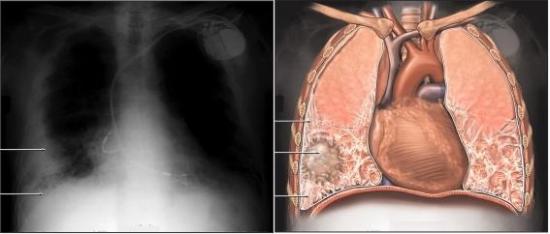肺组织纤维化(图)
据每日科学网最新报道,美国科学家发现了一种临床治疗癌症的药物可以阻断某些疾病所引起的内部器官或皮肤疤痕的形成,比如肺纤维化和硬皮病。
这类药物的通用名称是Bortezomib,它被证实能有效抑制人类细胞中纤维化蛋白的表达,并可抑制纤维化疾病模式小鼠疤痕的形成。
该研究的论文发表在最新的《Thorax》杂志上。
论文的第一作者,美国西北大学费因伯格医学院小儿科副教授Manu Jain说道:“这种药物能够抑制肺部和皮肤中疤痕组织的异常生长,而且在其它器官中也有可能发挥作用。这类疾病有着很高的致死率,目前临床上还没有真正有效的治疗方法。”
硬皮病属于一种自身免疫性疾病,临床表现为皮肤增厚和变得紧密,它可累及皮肤、滑膜及内脏,特别是胃肠道、肺、肾、心、血管、骨骼肌系统等,引起相应脏器的功能不全,甚至死亡。在美国大约有30万人患有该疾病,其中大部分是年轻和中年女性。
Jain的研究证实这种药物可以有效抑制一种名为TGF-β的蛋白表达,该蛋白是疤痕组织生长所必需的物质。在患有纤维化疾病的人体内,TGF-β通常有较高的表达水平和活性。
Bortezomib目前在临床上主要用于治疗多发性骨髓瘤和淋巴瘤。在该研究的纤维化病模式小鼠中,其能明显抑制纤维化疾病的发展。
科学家们同时使用了从肺纤维化和硬皮病病人中提取出的成纤维细胞进行了实验。结果显示,使用该药物也能有效抑制细胞中TGF-β的表达,从而抑制疤痕组织的生长。这为临床上治疗硬皮病提供了新的可能。(生物探索 Jun)
生物探索推进英文论文原文摘要:
Proteasomal inhibition after injury prevents fibrosis by modulating TGF-β1 signalling
Background: The development of organ fibrosis after injury requires activation of transforming growth factor β1 which regulates the transcription of profibrotic genes. The systemic administration of a proteasomal inhibitor has been reported to prevent the development of fibrosis in the liver, kidney and bone marrow. It is hypothesised that proteasomal inhibition would prevent lung and skin fibrosis after injury by inhibiting TGF-β1-mediated transcription.
Methods: Bortezomib, a small molecule proteasome inhibitor in widespread clinical use, was administered to mice beginning 7 days after the intratracheal or intradermal administration of bleomycin and lung and skin fibrosis was measured after 21 or 40 days, respectively. To examine the mechanism of this protection, bortezomib was administered to primary normal lung fibroblasts and primary lung and skin fibroblasts obtained from patients with idiopathic pulmonary fibrosis and scleroderma, respectively.
Results: Bortezomib promoted normal repair and prevented lung and skin fibrosis when administered beginning 7 days after the initiation of bleomycin. In primary human lung fibroblasts from normal individuals and patients with idiopathic pulmonary fibrosis and in skin fibroblasts from a patient with scleroderma, bortezomib inhibited TGF-β1-mediated target gene expression by inhibiting transcription induced by activated Smads. An increase in the abundance and activity of the nuclear hormone receptor PPARγ, a repressor of Smad-mediated transcription, contributed to this response.
Conclusions: Proteasomal inhibition prevents lung and skin fibrosis after injury in part by increasing the abundance and activity of PPARγ. Proteasomal inhibition may offer a novel therapeutic alternative in patients with dysregulated tissue repair and fibrosis.








